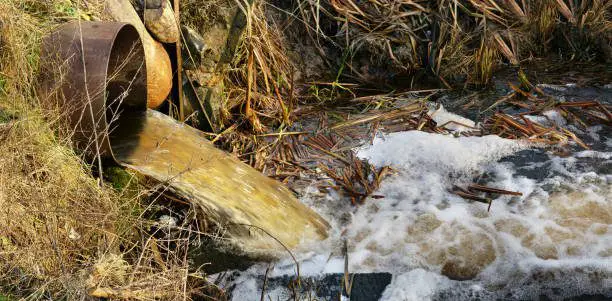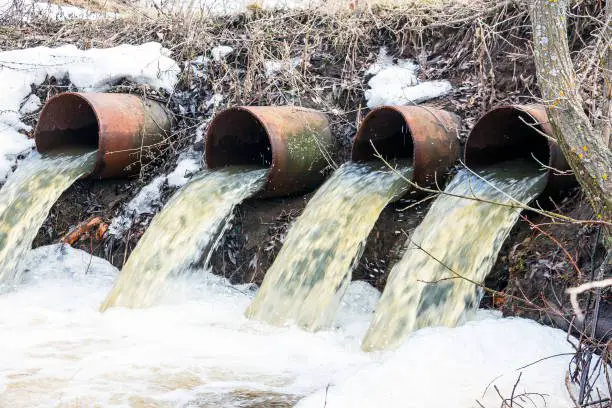Grey water is wastewater generated from activities such as washing dishes, doing laundry, and bathing. Unlike black water, which comes from toilets and contains human waste and other potentially harmful contaminants, grey water generally contains only soap, dirt, and small amounts of food waste.
Grey water can be treated and reused for non-potable purposes such as flushing toilets, watering plants, or irrigating lawns. This can reduce water consumption and save money on utility bills.
However, it is important to note that grey water should not be used for drinking, cooking, or personal hygiene purposes as it may contain bacteria or other contaminants that could cause illness if ingested or come into contact with the skin.
It is important to properly collect, store, and treat grey water to ensure that it is safe for reuse and does not cause environmental or health problems. Some areas have regulations governing the use of greywater, so it is important to check local laws and guidelines before installing a greywater system.
Ways To Manage Grey Water Properly

Greywater can come from sources such as bathroom sinks, showers, and washing machines. Proper management of greywater can help conserve water, reduce water bills, and protect the environment. Here is a complete guide to grey water management:
(1) Understanding Greywater Quality
Greywater contains organic matter, soap, and detergents, which can be harmful to plants and the environment if not managed correctly. Greywater quality is classified based on the level of contamination and the type of pollutants present. It is essential to understand the quality of greywater generated in your home or building to determine the best management practices.
Greywater is wastewater that comes from household activities such as bathing, washing dishes, and doing laundry. It is different from blackwater, which comes from toilets and is contaminated with fecal matter and urine.
Greywater quality can vary depending on the source and the level of treatment it has received. In general, greywater contains lower levels of organic matter, nutrients, and pathogens compared to blackwater.
However, it may still contain bacteria, viruses, and other contaminants that can pose health risks if not properly treated. Greywater quality can also vary depending on the presence of certain substances, such as:
Chemicals: Greywater may contain detergents, soaps, and other cleaning agents that can be harmful to plants and soil if not diluted or removed. Some products, such as fabric softeners and chlorine bleach, can also be toxic to aquatic life.
Nutrients: Greywater can contain high levels of nutrients, such as nitrogen and phosphorus, which can promote algae growth and other water quality issues if discharged in large quantities.
Particles: Greywater may contain small particles of food, hair, and other debris that can clog pipes and cause odor problems if not removed.
In general, it is recommended that greywater be treated before it is reused or discharged to the environment. Treatment methods can include filtration, disinfection, and/or chemical treatment to remove contaminants and improve water quality.
Additionally, it is important to use greywater in a way that is appropriate for its quality and intended use, such as irrigating non-edible plants or flushing toilets.
Read Also: Gaseous Waste Complete Management Guide
(2) Greywater Treatment Systems
There are several greywater treatment systems available, including filtration systems, aerobic systems, and constructed wetlands. These systems are designed to remove contaminants and treat greywater for reuse in irrigation or other non-potable uses. Consult with a professional to determine the best system for your needs.
Greywater treatment systems are systems that treat and recycle greywater, which is the wastewater generated from household activities like bathing, washing dishes, and doing laundry. Unlike blackwater, which is wastewater from toilets and contains human waste, greywater is relatively clean and can be treated and reused for non-potable purposes like irrigation, flushing toilets, and washing clothes.
There are different types of greywater treatment systems, but they generally involve filtering and treating the water to remove contaminants and impurities. Some systems use physical filtration, such as sand or gravel filters, while others use biological processes like aerobic treatment or constructed wetlands.
The benefits of greywater treatment systems include reducing water usage, reducing the load on wastewater treatment plants, and providing a sustainable source of water for non-potable uses. However, it is important to note that greywater treatment systems should be designed and maintained properly to ensure that the treated water is safe and does not pose a risk to human health or the environment.
It is also important to be aware of local regulations and requirements for greywater treatment and use, as they can vary depending on the location. In some areas, permits may be required for installing and operating greywater treatment systems, and certain restrictions may be in place on the types of uses for the treated water.
(3) Irrigation
Greywater can be used for irrigation, but it is essential to ensure that the water is not directly sprayed on edible plants or vegetables. Additionally, it is essential to use a distribution system that does not create aerosols, which can lead to the spread of pathogens.
Grey water is wastewater that comes from non-toilet plumbing fixtures such as sinks, showers, and washing machines. Grey water typically contains less organic matter and pathogens than black water (wastewater from toilets), making it a potential source of irrigation water.
Irrigating with grey water can be a sustainable way to reduce water consumption and improve plant growth. However, there are a few important considerations to keep in mind:
Safety: Grey water may contain harmful chemicals, pathogens, or bacteria, depending on the source of the water. It is important to ensure that the grey water is properly treated before it is used for irrigation. This can be done through various treatment methods, such as filtering, settling, or disinfecting the water.
Read Also: Food Waste Complete Management Guide
Suitability for plants: Some plants may be more sensitive to certain chemicals or salts in grey water, so it is important to choose the right plants to irrigate with grey water. Additionally, grey water may contain higher levels of nutrients than regular irrigation water, so it is important to monitor plant growth and adjust fertilization as needed.
System design: Irrigation systems that use grey water need to be designed to prevent contamination of the water source and to avoid contact with people or pets. The system should also be designed to allow for easy maintenance and cleaning.
Grey water irrigation can be a sustainable and cost-effective way to reduce water consumption and improve plant growth, but it requires careful consideration of safety, plant suitability, and system design.
(4) Plumbing and Piping
To effectively manage greywater, plumbing and piping systems must be installed correctly. Plumbing and piping systems must comply with local regulations, and it is recommended to consult with a professional to ensure that the system is designed and installed correctly.
Greywater refers to wastewater that is generated from non-toilet plumbing fixtures such as sinks, showers, and washing machines. It can be reused for non-potable purposes such as landscape irrigation, toilet flushing, and even in some cases for laundry use.
Plumbing and piping grey water require some modifications to the existing plumbing system. The plumbing system must be designed to divert the greywater to a separate tank or a treatment system before it is reused. This requires the installation of additional piping and valves to direct the greywater to the desired location.
The greywater must be treated before it is reused to ensure that it is safe for its intended use. There are several treatment options available, including filtration, disinfection, and chemical treatment. The treatment method used will depend on the intended use of the greywater.
It is also essential to ensure that the greywater system complies with local plumbing and building codes. This may require obtaining permits and inspections from local authorities.
Plumbing and piping greywater require careful planning and design to ensure that the system is safe, efficient, and compliant with local regulations. It is recommended to consult with a professional plumber or greywater system installer to ensure that the system is installed correctly and meets all necessary requirements.
(5) Maintenance
Regular maintenance of greywater systems is essential to ensure that they function correctly and efficiently. This includes regular cleaning of filters and monitoring of the system to detect any issues or malfunctions.
Greywater is the wastewater generated from sources such as showers, sinks, washing machines, and dishwashers. While it may contain some contaminants, greywater can be treated and reused for non-potable purposes such as irrigation, toilet flushing, and laundry. Here are some maintenance tips to ensure the proper functioning and safety of a greywater system:
Regularly inspect the system: Regular inspections can help identify any leaks, blockages, or other issues that may affect the system’s performance. Check the pipes, filters, and valves to ensure they are working correctly and not damaged.
Clean the filters: Greywater systems have filters that help remove debris and other contaminants from the water. Clean the filters regularly to prevent blockages that can affect the system’s performance.
Use eco-friendly products: Use biodegradable and non-toxic cleaning products to reduce the amount of harmful chemicals that enter the greywater system. Avoid using bleach, which can harm the beneficial bacteria in the system.
Don’t overload the system: Don’t overload the greywater system by sending too much water or using it for purposes it is not designed for. Doing so can cause blockages, leaks, and other issues.
Have a professional inspect and maintain the system: Have a professional inspect and maintain the greywater system at least once a year. They can identify any issues that may affect the system’s performance and ensure it is functioning safely and efficiently.
By following these maintenance tips, you can ensure that your greywater system is functioning correctly and safely, and you can enjoy the benefits of using recycled water while reducing your water usage and helping to conserve the environment.
In conclusion, proper management of greywater can help conserve water, reduce water bills, and protect the environment. Consult with a professional to determine the best greywater management practices for your needs, and always comply with local regulations and safety precautions.
Read Also: Hover Ball: The Ultimate Indoor Game for Kids and Adults

